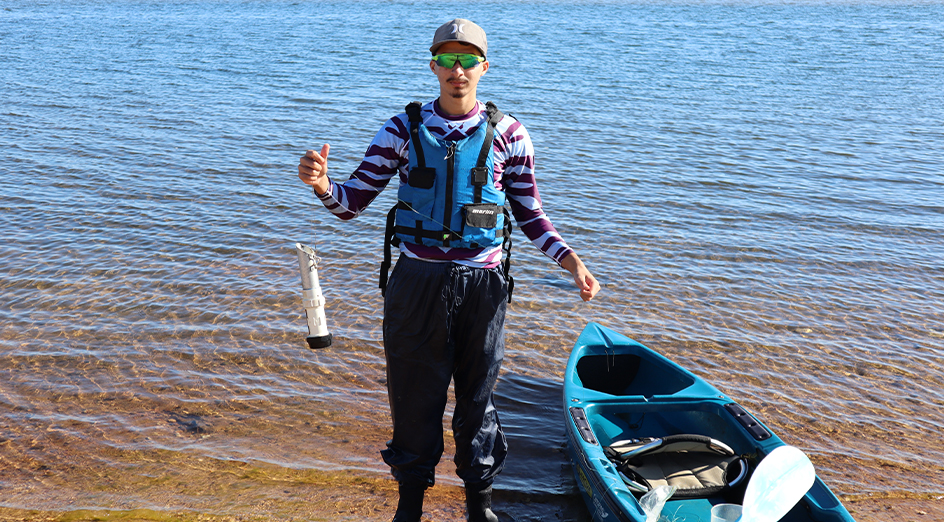A first-year international undergraduate student from Reunion Island and a retired professor from The University of Western Australia have led an international team of marine scientists to record the first invasive foraminifera in an Australian estuary.
The finding on the "armoured amoebae" is from an undergraduate volunteer research project at UWA and has been published in CSIRO journal Marine and Freshwater Research.
Clément Tremblin, who has just completed the first year of a Bachelor of Marine Science and Coastal Processes at UWA, began volunteering with Professor David Haig, from the Oceans Graduate School, whose research centres on marine micro-organisms called foraminifera.
Mr Tremblin and Professor Haig collected sediment samples from the Leschenault Inlet near Bunbury and identified microorganisms from the mud using light microscopy and a scanning electron microscope with help from UWA Oceans Institute's Dr Aleksey Sadekov and UWA graduate Dr Justin Parker.

Image: Clément Tremblin, first-year international undergraduate student from Reunion Island .
Comparisons with other Australian organisms did not provide a match, instead they discovered forams closely resembling Trochammina hadai, native to estuaries in Japan.
Live specimens were sent to Professor Maria Holzmann in Geneva for molecular analyses to confirm the identification. The forams from Bunbury were found to most closely relate to Japanese populations and another introduced population in San Francisco, US.
Bunbury Port exports woodchips to Japan in large cargo ships with relatively shallow draughts – these ships empty their ballast on arrival to the port, dumping a mixture of water and sediment from Japan. The port is situated south of Leschenault Inlet where the forams were recovered.
"The discovery of introduced forams in estuaries may provide a useful indicator for the possible presence of other exotic species, particularly in the vicinity of ports," Mr Tremblin said.
"I was able to explore a beautiful part of the coast in the Bunbury-Leschenault Inlet area during this project and produce a first-authored paper."
The foraminifera discovered in Leschenault Inlet have been added to one of the biggest collections of modern and fossil foraminiferal species in the southern hemisphere housed in the Earth Science Museum at UWA.
Mr Tremblin's next project looks at the evolution of Trochammina suggested by molecular analyses, compared to the stratigraphic record of their fossils over the last 300 million years in Western Australian sedimentary basins and similar deposits elsewhere.






